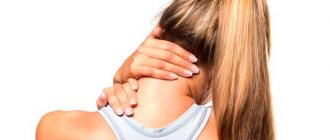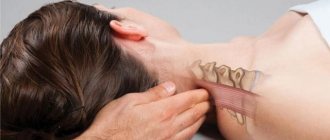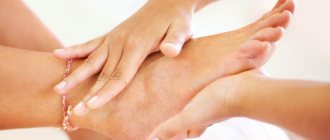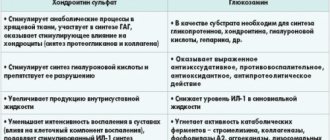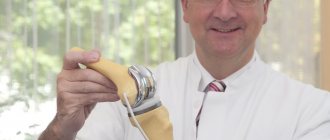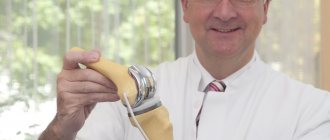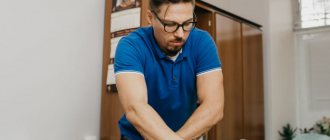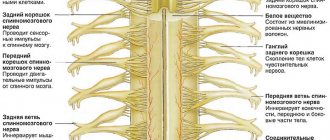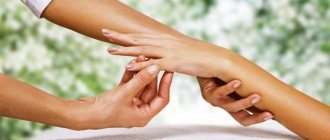The dynamics of the spread of osteochondrosis is characterized by an increasing pace - degenerative changes are increasingly diagnosed in young patients who have just crossed the 20-year age limit. Back massage helps prevent deterioration of the spine in the presence of osteochondrosis, which in medical statistics is becoming increasingly firmly established in the list of the most common diseases of the musculoskeletal system.
Osteochondrosis: what it is and the reasons for its appearance
At a young age, the spinal column has an increased margin of safety, so even with prolonged exposure to adverse factors, the destruction of the intervertebral discs occurs slowly. The natural mechanisms of aging and wear and tear of the body gradually accelerate this process. After 25 years, most patients periodically experience back pain, so they increasingly begin to think about what it is and how osteochondrosis affects the body. From a medical point of view, the pathology includes dystrophic changes in the cartilage tissue in the spine, which reduces its mobility. Displacement of bone tissue, causing a reflex spasm, forms a pain syndrome.
Destructive changes provoke displacement of the intervertebral discs, pinching of the radicular nerves and the appearance of osteophytes (bone growths) in the spine. Without the use of therapeutic and prophylactic agents, the pathological condition can progress, causing conditions that must subsequently be corrected surgically.
Causes of osteochondrosis:
- age-related changes;
- incorrect body position;
- physical inactivity (lack of activity);
- mechanical injuries;
- transportation of heavy objects;
- weak muscle frame;
- postural disorders (including scoliosis);
- genetic predisposition;
- flat feet;
- excess weight;
- sleeping on a non-ergonomic pillow;
- professional sports.
In women, osteochondrosis develops more quickly due to wearing shoes with heels - a change in load leads to displacement of the vertebrae. Pregnancy is another common factor in the development of the disease: fetal growth provokes displacement of the lumbar vertebrae, so closer to childbirth, expectant mothers often experience pain localized in the lumbosacral region.
Heavy physical activity, typical for men, causes osteochondrosis and accompanying degenerative changes more often for this reason. The stronger sex also often abuses smoking and drinking alcoholic beverages, which worsen metabolic processes in the body, including inside the intervertebral discs. Intoxication of the body reduces the amount of intra-articular fluid and leads to the leaching of calcium from the vertebrae.
Spinal pain does not necessarily indicate cartilage damage
A fall or an uncomfortable position can only damage the ligaments and muscle fibers, which cause pain due to the resulting hypertonicity.
How do I know if I need a massage?
A person is designed in such a way that most often he solves a problem precisely when it is already noticeably noticeable. The same applies to health, although it is much easier to prevent troubles of various kinds, especially with the help of massage, since this is the optimal preventive and therapeutic measure for solving a large number of medical, aesthetic and other issues relating to the body.
Therefore, a person needs massage throughout his life in various situations:
- Elimination of pain - when performing massage techniques on a person who complains, for example, of back pain, endorphins are released in the body, which help reduce pain.
- Increasing immunity - properly conducted massage courses indirectly affect the composition in the blood, in particular, the normalization of protein and its fractions. And since proteins are one of the key links of immunity, this helps strengthen it.
- Improved flexibility - according to research, even one full massage session per week after 5-6 weeks will make the spine more flexible and reduce discomfort in the lumbar region.
- Help in stressful situations - in this case, Thai massage is indispensable, which is aimed not only at eliminating discomfort in various parts of the body, but also at achieving inner peace, tranquility and relaxation.
- Headaches, migraines - for such complaints, but only in the absence of contraindications, massage of the collar area, separately the neck and/or head is necessary.
- Psycho-emotional background - even one session of the right massage activates the production of serotonin and dopamine in the brain, which are the hormones of pleasure and happiness.
- Improving the general condition after physical activity and warming up the muscles before training - this type of massage, namely sports, is a constant companion and a necessary attribute of athletes.
- Increasing the resources and endurance of the body - a well-designed comprehensive program of various massage techniques and their frequency significantly contributes to strengthening the entire body, increasing endurance of physical and psychological stress, and increasing resistance to the development of many diseases.
- Sleep disturbance is such a condition, especially against the background of nervous disorders, worries, changes in weather conditions, is not uncommon, so in such a situation, a course of massage will help restore the process of falling asleep and the quality of sleep.
And, naturally, massage is necessary for those who are in a sitting position almost all the time during the working day. Here you will need a classic massage to relax the muscles, and techniques aimed at improving blood circulation in the lower extremities, as well as manipulations that help eliminate swelling and strengthen the muscular frame of the spine.
Departure is paid separately - from 550 rubles
Request a call
Call:
+7 (499) 455-08-05
Symptoms of osteochondrosis
Comparing your own physical sensations with the symptoms of osteochondrosis helps to fully convey to the therapist a list of existing unpleasant sensations, so that the specialist can accurately make the correct diagnosis.
Symptoms of osteochondrosis:
- limited mobility;
- pain in the chest, neck or lower back;
- numbness of the limbs;
- ringing and other noises in the head;
- dizziness;
- pressure surges;
- headache;
- crunching when moving (often in the neck).
As the patient's condition worsens, the number of symptoms expands to the appearance of fainting, weakening of memory and reaction speed. The feeling of stiffness and numbness is diagnosed in the morning, and during the day the sensations periodically decrease or increase in intensity.
The type of pain in osteochondrosis is acute, piercing and forces a person to abruptly stop moving.
Degrees of osteochondrosis: 1, 2, 3, 4 stages
Regardless of the localization of the pathology - in the neck, lower back or chest, with all types of osteochondrosis, the same pathological changes are observed inside the vertebrae and discs that separate them.
- Stage 1.
Initial changes are associated with a slight decrease in the height of the disc, but already in this form the displacement leads to the appearance of cracks in the fibrous ring and dehydration (dehydration) of the vertebral core. Pain in a person appears only when an uncomfortable position is maintained for a long time. - Stage 2.
Further reduction in the height of the disc leads to weakening of the ligaments and spinal muscles, which begin to hold the vertebrae worse. For this reason, their mobility increases, especially during physical activity. At stage 2, the appearance of bone outgrowths (osteophytes) is possible, while in patients with stage 3 they are already diagnosed in 100% of cases. - Stage 3.
The disc, experiencing excessive pressure from adjacent vertebrae, takes on a flattened shape, in which part of it extends beyond the limits of contact with the vertebrae. The patient is diagnosed with protrusions (“protrusions”), prolapses, and arthrosis of the intervertebral joints. With this form of the disease, back massage for osteochondrosis can still help the patient prevent complications from occurring. Symptoms of the third stage: prolonged pain arising from pinched nerve roots. - Stage 4.
Rupture of the fibrous ring leads to the appearance of an intervertebral hernia, causing acute pain and problems with movement (ankylosis develops - immobility of the vertebral joints). The type of treatment chosen depends on the size of the hernia: surgery is indicated in the presence of a large prolapse - more than 12 mm, as well as signs of sequestration (separation of part of the disc and its entry into the area of the spinal canal adjacent to the vertebra).
The benefits of back massage for osteochondrosis
Destructive changes in the vertebrae develop mainly due to lack of physical activity, but a course of back massage can restore the lost useful load. Additionally, muscle kneading leads to increased blood flow, which triggers the process of self-healing in the body if the cause of health problems relates to other factors that caused the pathology.
BENEFITS FOR CERVICAL OSTEOCHONDROSIS
- relief from spasms of the cervical and occipital muscles;
- improving brain nutrition;
- restoration of the nervous system;
- neutralization of radiating (side) pain in the shoulders, arms, neck;
- increased mental abilities;
- elimination of headaches;
- improved vision;
- normalization of pressure.
Amazing fact
The use of acupressure techniques on the back area (locally - SHV) can also increase concentration.
ADVANTAGES OF USING MASSAGE FOR THORACIC OSTEOCHONDROSIS
- elimination of hypertonicity of the latissimus muscle;
- relief of pain between the shoulder blades;
- reducing the angle of pathological curvature of the spine;
- elimination of non-cardiological pain in the heart area;
- activation of the lungs and heart.
It is easy to distinguish thoracic osteochondrosis from cardiac disease - after taking “heart” medications, chest pain does not disappear.
BENEFITS FOR LUMBAR OSTEOCHONDROSIS
- relieving tension in the thoracolumbar fascia;
- elimination of radiating pain in the legs;
- disappearance of pain when bending over and walking;
- restoration of hip mobility;
- elimination of cramps in the legs;
- improving the functioning of the genitourinary system.
The general beneficial results of back massage for all types of osteochondrosis include: strengthening the muscle corset, improving blood supply to adjacent tissues, eliminating compression of arteries and nerve roots, disappearing swelling, restoring the correct location of the vertebrae.
Medical fact
A course of massage increases the shock-absorbing properties of the vertebrae, which prevent bone and cartilage tissue from being damaged during movement.
Main types of therapeutic back massage
- Classical. It is the most common and in demand. This massage has no age restrictions.
- Acupressure back massage. Its second name is acupuncture. The meaning of this type is that during the massage there is an impact on specific points responsible for certain organs.
- Vibromassage is one of the options for hardware massage, the meaning of which is to transmit oscillatory movements that differ in frequency and deflection through a vibration device.
- Hydromassage is another option for hardware massage, during which water jets are applied to specific parts of the body.
- Cupping back massage. Improves blood circulation. The technique is based on the use of specialized medical cups.
There are the following types of back massage, which can only be prescribed by a doctor:
- relaxing (helps relieve fatigue and tension, lift your mood, can cope with internal worries and worries);
- lymphatic drainage (characterized by cleansing and rejuvenating properties, removes excess fluid from the body);
- anti-cellulite (has a softening effect on the skin, makes the figure slimmer, a good helper in the fight against cellulite);
- therapeutic massage, indicated for various pathologies of the spine (for scoliosis, hernia, osteochondrosis and other problems, helps cope with pain, regulates blood flow in the muscles, has a relaxing effect, relieves cramps).
Rules for performing massage
At the first session, the massage therapist, carefully palpating the skin and muscles, identifies painful areas of the back that should be treated more gently. The treatment time is determined individually, but the standard number of sessions in a course includes 10–15 procedures, while only 5–7 sessions are sufficient to prevent osteochondrosis. The duration of the procedure is from 20 to 40 minutes, which increases as the muscles adapt to the load.
Important aspects of massage:
- placement of the patient - horizontally;
- position in the presence of pain - on the side;
- technique of the first session - soft stimulation without stress on the damaged areas of the back;
- sequence of exposure - transition from healthy areas to diseased areas;
- the direction of massage movements is along the lymph flow;
The massage therapist can also increase blood flow if he uses warming ointments during the session.
It is forbidden to visit the massage room during an exacerbation of the disease, which causes acute pain.
Advantages of the treatment procedure
Manipulations carried out by the hands of a massage therapist will bring benefits: relaxation, muscle restoration and healing of joints, and the general condition of the body will improve. Manual therapy is becoming a particularly popular method: an effective massage that has many functions: it affects not only the muscles, but also the deepest structures of the spine: ligaments, tendons, vertebrae.
Massage movements have restorative and therapeutic functions at the same time: pain in the lower back, spasms in other areas of the back go away, the vertebrae return to their previous position, and the person feels healthy again. Of all the ancient techniques: massage is the most pleasant and safe procedure that brings health and longevity.
Back massage technique and important techniques
The main goal of the massage is to cause active blood flow, which will create maximum nutrition of the vertebrae and discs. Considering this physiological effect, vertebrologists, who are often asked the question of whether it is possible to undergo a course of back massage for osteochondrosis, give an affirmative answer to it - it is useful to do it. Beneficial effects also include remineralization of bone tissue and relief of compression of nerve endings located in the spine.
Sequence of effects for osteochondrosis
- Stroking (superficial impact).
A massage specialist performs a series of strokes, starting from the top of the head and ending in the shoulder area, then the trajectory lengthens to the middle of the back. - Rubbing.
Using the fingertips in a circular motion, work first on one part of the back, then on the other. - Kneading.
When performing this technique, gripping the hands leads to the formation of a small fold (the effect is reminiscent of kneading dough). For osteochondrosis, several types of kneading are used: longitudinal, transverse, reinforced (with weights with the second hand), forceps.
To increase the beneficial effects of back massage, kneading should also be carried out in the area of the buttocks and sacral part, especially in the presence of lumbar osteochondrosis caused by destructive changes between the sacrum and the fifth lumbar vertebra (L5–S1 protrusion).
Important.
The massage effect on the kidney area is carried out with less force.
- Rolling (active massage).
An effective relaxation technique for back massage involves grasping a fold of skin and gradually rolling it into the neck area. - Vibration and tapping.
Elements with a more intense impact must be performed at a distance of at least 5 cm from the site of damaged vertebrae. - Squeezing (deep massage).
One hand is placed on top of the other to form a cross, which moves from bottom to top - from the lower back to the shoulder girdle. Attention: the spinal column is not touched. - Patting and finger rain (relaxing ending).
The first technique involves forming “buckets” with your fingers, which smoothly apply to all areas of the back. The next effect is carried out by lightly but quickly tapping the fingertips on the skin. The final part of the session can be supplemented with a series of strokes.
Experienced massage therapists also advise adhering to the correct classical (unshakable) recommendations on how to do a therapeutic back massage - use a hard surface (floor, mat, hard bed), conduct a treatment session for osteochondrosis only in the absence of contraindications, and observe a break between procedures of no more than 1– 2 days (with course therapy).
The final result of a back massage is the removal of inflammation in the vertebrae and inhibition of degenerative processes that reduce the mobility of the spine and lead to atrophy of muscle tissue.
Warning
It is prohibited to use forceful techniques in places where there is severe instability of the vertebrae (detected by x-ray examination).
Features of lower back massage
To achieve the optimal effect of the procedure, the patient needs to prepare for it:
- an hour before the massage, do not eat or drink, empty the intestines;
- take a shower;
- do not do active exercises;
- tune in to a positive wave.
To achieve complete relaxation of the patient, it is recommended to massage the lower back on a flat couch using cream or oil. The technique and timing of the session are selected according to the indications from the medical record and based on the individual characteristics of the person. The most common types of massage: acupressure, classic and vacuum. Each physical technique includes kneading, rubbing, vibration and shock.
Therapeutic massage is fully approved by medical science. Vigorous massaging of problem areas of the back contains the following positive aspects:
- restores the mobility of the vertebrae, correcting their position;
- increases muscle tone and eliminates stiffness and spasms;
- activates cellular activity and improves blood flow;
- prevents painful clamps;
- improves local immunity.
Back massage for various types of osteochondrosis: cervical, thoracic, lumbar
- Cervical.
A patient suffering from cervical osteochondrosis can take a sitting position during the session, and the impact itself will be limited mainly to kneading the cervical-collar area. - Chest.
Damage to the vertebrae in the center of the back often leads to pain that radiates to the shoulder joints. Including the deltoid muscle area in the treatment area helps to quickly eliminate pain. Back massage for osteochondrosis of the thoracic and lumbar spine is also performed on the entire surface of the back of the body. - Lumbar.
In the lumbar region, the pace of the massage intensifies: the massage therapist uses tapping and effleurage techniques, as well as intense kneading and vibration.
Kneading the gluteal muscles includes impact with fists, the inside and ribs of the palm.
Indications and contraindications for back massage for osteochondrosis
Massage is part of complex therapy in the presence of pathologies of the musculoskeletal system. Therapeutic procedures are recommended for patients if they have indications for back massage in the presence of osteochondrosis, which progresses if the patient is inactive. However, due to existing contraindications, visiting the massage room may be prohibited.
Indications for chondrosis:
- muscle hypertonicity;
- limited mobility;
- the risk of the disease progressing to a more severe stage;
- impaired cerebral circulation;
- oxygen starvation of tissues and organs;
- crunching when turning the body or head;
- presence of pain in the back, lower back, neck;
- fast fatiguability;
- insomnia;
- headache;
- the appearance and growth of the “withers”.
A recommendation to visit a specialist in the field of massage is given by a therapist if, after interviewing the patient and studying the tests, there are no identified limitations. An additional condition is the transition of osteochondrosis to the stage of complete or partial remission.
Avoiding back massage if there are complications:
- sequestration (separation) of hernia;
- severe dizziness;
- impaired coordination of movements;
- pressure surge (over 160 blood pressure);
- exacerbation of the disease (severe pain).
Additionally, general contraindications to massage are taken into account - conditions that pose a threat to health, regardless of the patient’s diagnosis.
General contraindications:
- malignant diseases;
- wound surface;
- purulent processes;
- hypertension (grade 2 and 3);
- increasing tachycardia;
- heart failure;
- pre-infarction condition;
- tendency to bleed;
- scurvy;
- gangrene;
- kidney and liver failure;
- open tuberculosis;
- alcohol intoxication (temporary);
- colds and flu (temporarily).
After the session, it is also prohibited to stay in the cold for a long time and in rooms where there are drafts. It is recommended to stay warm for at least 30 minutes after completing the procedure.
Minor scratches and abrasions are considered local contraindications, in which it is necessary to carry out massage at a distance (up to 5 cm) from the damaged dermis. Convex moles and warts are also not affected.
The effectiveness of spinal massage
Experienced specialists recommend performing massage procedures during the period when the disease is in a subacute state. However, this does not exclude situations where, at the discretion and insistence of the doctor, spinal massage is carried out during an exacerbation. But in such cases, during the first massage sessions, excessively intense techniques for influencing the back muscles are not used.
Important: By spinal massage we mean working out the area to the left and right of the spinal column at a distance of 3-10 cm, as well as from the head to the tailbone (from the upper to the lower spine). In this case, traditional techniques are used such as stroking, kneading, tapping, squeezing, etc.
Massage of the back, lumbar and surrounding areas has a positive effect on overall well-being: thanks to the correct effect on the muscles, the body is saturated with missing energy, pain disappears, tense and tight muscles relax. And this is not the entire list of advantages of such a procedure. So, spinal massage:
- strengthens the immune system;
- improves blood circulation;
- normalizes the functioning of the sebaceous and sweat glands;
- stabilizes the activity of the central nervous system;
- relaxes tense muscles;
- tones the muscles and the body as a whole;
- saturates tissues with oxygen and missing microelements;
- copes with diseases of the musculoskeletal system;
- relieves pain syndromes;
- strengthening the muscle corset;
- relieves fatigue;
- straightening the spine, normalizing posture;
- stabilizes metabolism;
- improves well-being and increases performance;
- restores the anatomically correct location of the vertebrae;
- prevents the risk of various pathologies.
Back massage is often used to relieve pain and relaxation in people suffering from chronic stress. This procedure can provide a therapeutic effect, as well as a relaxing and tonic effect. It calms, relieves muscle cramps and mental stress, and normalizes blood circulation. If your pain has reached a chronic stage, then this type of massage is for you.
Helpful advice: Do not trust a non-professional to perform a massage procedure. Select a highly qualified specialist who has experience in conducting such a massage. If we are talking about rehabilitation of the musculoskeletal system, it should be carried out exclusively by a doctor, otherwise there is a risk of aggravating the situation.
Massage with medicinal ointments
The classic use of ointments designed to relieve pain in various parts of the spine is often limited to patients rubbing them into the skin themselves. Superficial rubbing performed in this way leads to limited absorption of active substances into the epidermis, while massage with medicinal ointments helps to increase the degree of penetration of medicinal components to the deeper layers of the skin and muscle fibers.
Options for using ointments by group:
- Anti-inflammatory.
Destruction of the intervertebral disc provokes a pathological effect on the surrounding soft tissue. Popular representatives of the group - Finalgel, Diclofenac, Nimesulide gel - help relieve inflammation and swelling by inhibiting the synthesis of substances responsible for tissue inflammation - prostaglandins. - Locally irritating.
Well-known options with a warming effect - Capsicam, Efkamon, Finalgon, Nicoflex - contain bee or snake venom, red pepper or nonivamide (synthetic substances), which cause a feeling of warming due to increased blood flow. Ointments with camphor, peppermint oil and menthol (camphor ointment, Deep Relief), on the contrary, have a cooling effect (best used in the hot season). - Vascular.
Venoruton, Troxevasin, heparin ointment are included in the group of venotonics - drugs that strengthen the walls of blood vessels. Phlebotonic and angioprotective ointments for osteochondrosis should be included in a massage session when the patient has a tendency to develop venous dilatation of the veins. If a patient is diagnosed with a so-called capillary network on the body, then during the treatment procedure the fragility of the capillaries decreases and the swelling decreases. - Chondroprotectors.
By rubbing preparations with glucosamine and chondroitin (Chondroxide, Teraflex, Chondroitin-AKOS, Chondrolone) into the skin, you can achieve rapid renewal of cartilage tissue and eliminate pain. If you use chondroprotectors during therapeutic massage, which is also called wellness for osteochondrosis, you can also increase the resistance of connective tissue to mechanical stress.
To enhance the effect, alternate the use of different lubricants. The most effective combination is considered to be: proto-inflammatory agents + local irritants + relaxing ointments. If osteochondrosis is caused by injury, then it is rational to change this combination: anti-inflammatory drugs are combined with vascular options.
Medical fact
The use of medicinal ointments during a massage session is guaranteed to reduce the treatment time for osteochondrosis.
Self-massage of the back for osteochondrosis
Self-massage for osteochondrosis is possible only if lesions of the lumbar or cervical vertebrae are diagnosed, while for the thoracic vertebrae - due to the anatomical features of the location of the arms and back - it is impossible to do without visiting a massage room. You can get acquainted with the massage technique at home in a separate section, which is devoted to the nuances of its implementation. Find out more.
Having mastered the technique of self-massage, the patient has the opportunity to consolidate and prolong the therapeutic effect for a long time after completing the massage course completed by a specialist.
Massage for exacerbation of osteochondrosis and spinal fissures
A decrease in intervertebral space leads to periods of good and bad health in the patient, so patients often wonder whether it is possible to do a massage if the patient has an exacerbation of osteochondrosis, but there is a strong desire to visit a massage room. Vertebrologists classify this condition as a temporary contraindication - after the pain has subsided, the course of treatment procedures can be completed without restrictions.
Doctors refer to the condition, which is called a spinal fissure, as fractures that occur after a blow, fall, or a person gets into an accident. An unfavorable situation can lead to a fracture of both the vertebra and its spinous and transverse processes. You should resort to a massage therapist only after the bone and cartilage tissues have healed. The reason is a high risk of increasing destructive processes due to increased mobility of muscles and skin.
Loss or decreased sensation in the limbs is a likely sign of a spinal fracture and spinal cord injury.
Indications for massage of the spine area
- Osteochondrosis.
- Lumbodynia, lumbago.
- Thoracalgia.
- Cervicalgia.
- Neuralgia.
- Spinal cord injuries.
- Piriformis syndrome.
- Protrusion of intervertebral discs.
- Humeroscapular periarthrosis.
- Instability of the spinal motion segment.
- Strokes.
- Coxarthrosis.
- Scoliosis.
- Intervertebral hernia (uncomplicated).
- Spinal tumors.
- Acute and acute chronic infectious diseases.
- Traumatic lesions of the spine, spinal surgery.
Criteria for choosing a massage therapist for the treatment of osteochondrosis
General massage, which is used exclusively for relaxation, is easier to learn, but mastering the therapeutic effects is another matter. If you have a back problem, the choice of a massage therapist should be made according to more stringent criteria.
Qualities of an experienced massage therapist:
- Medical license.
Having a permit is the foundation for successful treatment of osteochondrosis using massage. Self-taught people have a vague understanding of the anatomy and features of the course of diseases of the spinal column, while specialists with medical education know the structure of the body ideally. - Experience.
Extensive experience is a guarantee of receiving a safe service that will bring real benefits. Beginners often make mistakes at the beginning of mastering massage skills for chondrosis, and such behavior is dangerous due to the appearance of complications. Inexperienced massage therapists are also unable to create an individual program for a patient depending on his diagnosis - most often they use universal techniques without thinking about the subtleties. - The ability to empathize.
A person suffering from a disorder of the musculoskeletal system also needs to relieve emotional stress. An experienced massage therapist always knows how to maintain a conversation, listen and at the same time obtain additional information about the disease during the session. The main qualities of a specialist: delicacy, goodwill, openness, responsiveness, accuracy, sincerity.
You should also pay attention to the conditions in which the massage therapist works. The clinic is the best place where it is possible to maintain favorable sanitary and temperature conditions.
Each new session with an experienced and reputable massage therapist should begin with hand washing.
Types of spinal massage
Of course, classic massage is not the only type of procedure of this type. The back muscles can be affected in several ways and here are some of them:
- Acupressure
The spine, as mentioned above, is part of a huge muscular canvas called the back. The latter is endowed with a large number of biologically active points that are responsible for certain internal organs. The choice of points for impact depends, first of all, on where the pain is located and which organ is affected by the disease.
In total, science has identified 695 biologically active points, each of which has its own significance and has a direct impact on one or another process of the human body. Of course, it is not necessary to remember all the points - you just need to remember the most basic ones and then achieving the desired result will not be difficult. So, for example, acupuncture, which is based on the use of these points, costs only 150 points. They are not so difficult to find - they are marked by depressions in the skin, tubercles and depressions.
Acupressure, as well as segmental, is the most effective in the treatment of cervical osteochondrosis. Osteochondrosis itself requires medical intervention, however, it is undesirable to completely exclude massage from the treatment plan, since a correctly performed procedure, supplemented with the necessary techniques, demonstrates a truly impressive result. Massage for osteochondrosis is more effective than therapeutic exercises, since it can improve the immune system and tone the entire body.
Before the session, the patient is selected the optimal posture and position of the body: the client is placed in a lying or sitting position. If we are talking about a lying massage, then the patient is placed on a hard surface, his head is turned to the side and his arms are extended along the body. The second option uses a chair with a back, on which the patient sits facing the back. The client's head is lowered onto his hands, which, in turn, are folded onto the back of the chair. If the position does not allow you to relax, use a pillow or towel, which is placed under the head for greater comfort.
Important: One way or another, the procedure always begins the same way - the specialist warms up his hands. This is done so as not to impact the muscles with cold palms and not squeeze them even more.
The massage starts from the lower back, no matter how surprising it may sound, and ends with working on the collar area. One procedure takes about half an hour or 40 minutes. During this time, the following manipulations are carried out:
- The massage therapist strokes the back and thereby relaxes the muscles, all movements are carried out along the back three to four times;
- The back is warmed up by rubbing in a circular motion;
- a series of traditional techniques is used to warm up the back muscles: transverse and longitudinal movements, “squeezing”, “pulling”, circular movements along the back, etc.;
- the cervical-collar region is rubbed;
- Using the edge of the palm, the area between the shoulder and head is worked out - this stage is done with the utmost care;
- attention is paid to points along the spine.
- Honey massage
Honey back massages have impressive healing properties and, of course, thanks to the anti-inflammatory properties of honey. With the right approach to this massage, you can achieve relief from diseases of the musculoskeletal system, spinal hernia, osteochondrosis, radiculitis, etc.
Honey massage is most often used on those patients who suffer from spinal diseases, frequent colds and rheumatic attacks. In addition, it is ideal for those who spend too much time in a sitting position during their work and put stress on their back. This procedure relieves chronic fatigue, insomnia and even negative psychological conditions (in particular, stress).
Helpful advice: For a honey massage, it is extremely important to use natural honey, and not diluted store-bought honey, since the effectiveness of the procedure depends on this.
There are several types of this massage, but despite all their differences, there are a number of rules that should be followed in any case, otherwise there can be no talk of any expected result. Here are just a few of them:
- Under no circumstances do a honey back massage too quickly or too intensely, as pain during this massage may be harmful to your health;
- Gentle and careful movements should be carried out along the lymphatic pathways;
- Despite the fact that the procedure is called a spinal massage, it is impossible to directly influence the spine, as well as the lymph nodes.
All this suggests that the correct implementation of the procedure depends on the presence of certain skills and knowledge.
- Vacuum massage
The effectiveness of cupping treatment has been proven repeatedly - this method has come to us since ancient times and over time has only confirmed its peculiarity. With the help of special cups, they previously fought against a huge number of ailments, including osteochondrosis.
Considering how unique the cupping procedure is, before deciding that it is necessary for you, you need to consult a doctor and, based on his recommendations, determine whether cupping massage is worth it.
There are not as many options for carrying out this procedure as it seems - banks are installed in one of the following ways:
- On the sides of the spinal column: the procedure lasts only 15 minutes and is repeated only after the marks from the first approach have passed;
- Moving the jars along the back using a vacuum: the massage therapist uses a special gel to create a vacuum in the jars and, with its help, moves the jar along the back (do not forget that you cannot influence the spine).
There is also a vacuum roller massage, which can be used to influence the deep layers of the skin.
Prognosis for treatment of osteochondrosis with massage and frequency of its implementation
Therapy, which exclusively includes taking medications and maintaining a rest regime, is ineffective, while exercise therapy together with massage for osteochondrosis helps to increase blood flow and strengthen muscles. Stages 1 and 2 of the disease can be corrected—it is relatively easy to slow down destructive processes. At stages 3 and 4, visiting a specialist is also useful, however, these forms can no longer be treated exclusively with massage. With careful attention to health, the prognosis is favorable.
The frequency of procedures depends on the patient’s condition: for prevention, 5–7 sessions are sufficient, carried out once every six months; if the condition worsens, it is necessary to double the number of sessions, sometimes triple (up to 10–20 procedures), and reduce the intervals between courses to 2–4 months. In the presence of hernias and protrusions, treatment tactics are determined strictly individually.
The dynamics of treatment depends on following the doctor’s recommendations and eliminating the main damaging factors - excessive physical activity, poor posture, physical inactivity, and excess weight.
